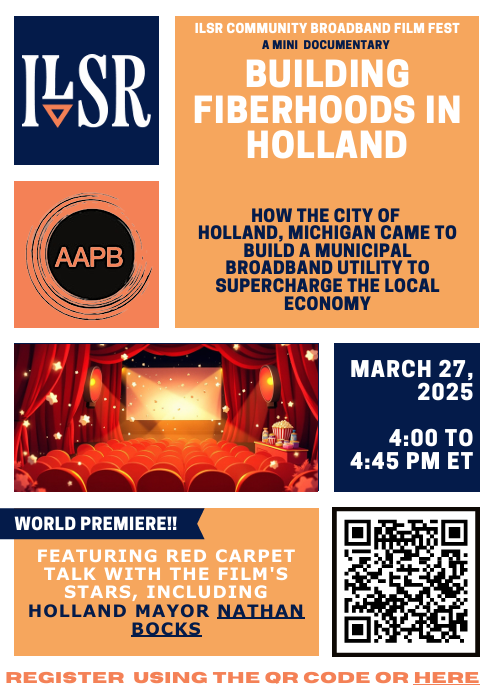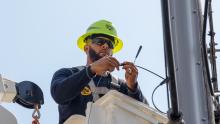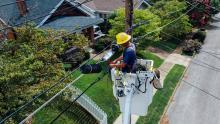ILSR and AAPB To Host Community Broadband Film Fest
Consider this your invitation to the first Community Broadband Film Fest.
Slated for March 27 from 4 to 4:45pm ET, the livestream event will feature the world premiere of “Building Fiberhoods in Holland” – a mini eight minute documentary on how the city of Holland, Michigan came to build a municipal broadband utility to supercharge its local economy.
The short film tells the story of how – after almost a decade of consideration, education, planning – Holland, Michigan embarked on a mission to build a city-owned fiber network offering fast, affordable, world-class Internet service.
Narrated by key leaders in the city of 33,000, viewers will learn how and why the city established its own municipal broadband utility to solve its local connectivity challenges.

Hosted by ILSR’s Community Broadband Networks team and the American Association for Public Broadband (AAPB), the event will kick-off with virtual red carpet introductions of some of the film’s stars, including Holland Mayor Nathan Bocks.
After the screening, viewers will be able to engage the real life cast in a bit of Q&A.



